You've heard of planting things en masse, but does that mean you pick out five petunias instead of one or two? Try 50
or even 550 petunias — often that's what's needed for a good mass planting to make a "river." Of course, all those plants can get expensive, so the best solution is to find a plant that is fast growing and spreads easily. Creeping sedums, thyme, herbs and ground covers are great options. Encourage your plants to spread via seed or division and watch your river grow.
Before starting out, make sure to prepare your garden soil. The trick to these plantings is creating a solid mass of color, unbroken by other plants. If you don't pull all the weeds now, you will be cursing yourself as your river turns to a mess of thistle and clover. Once you have a blank slate, you are ready to begin.
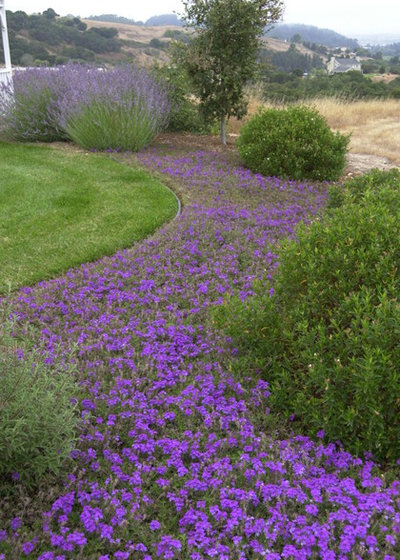
Elemental Design Group
The classic river of plants consists of one variety and hue for a bold statement. This planting gains structure from well-placed evergreens and a clump of Russian sage, echoing the natural look of stones and boulders in a creek.
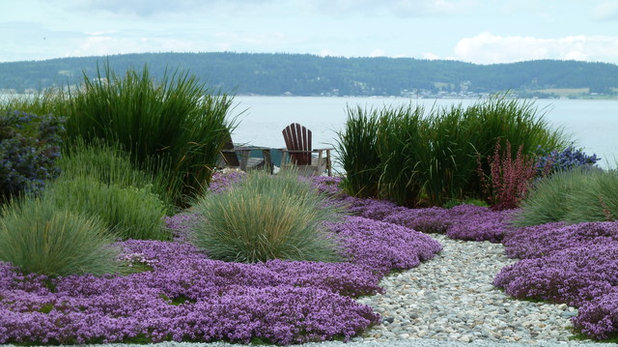
Lankford Associates Landscape Architects
Here is another variation: a lake of purple with a single bridge across it, made by planting waves of purple on either side of the path. Again, notice the grasses dotted throughout, giving structure to the planting. Without these accents, a mass planting simply looks like a formal mass of plants as opposed to a more natural and flowing form.
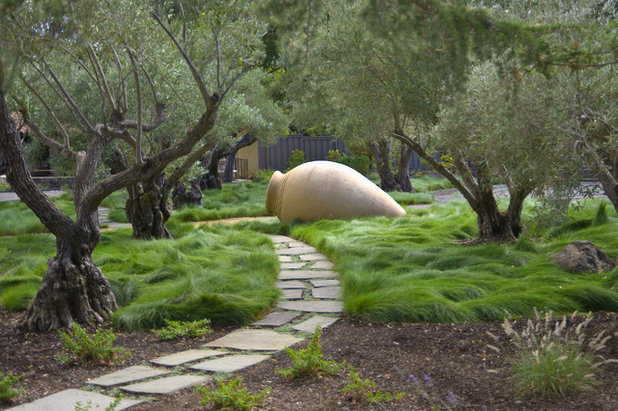
Kikuchi + Kankel Design Group
Grasses are a perfect choice for planting landscape rivers. Choose grasses that don't grow straight up, such as a Red Fescue or
Festuca rubra, seen here. These grasses wave in the wind, almost looking like water as you walk through the path.
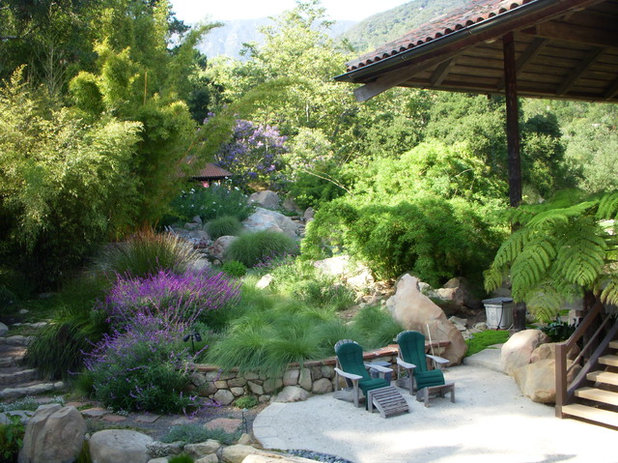
Pat Brodie Landscape Design
Another great application for grasses is in a waterfall type of planting. Planting similar plants with lots of movement cascading down a hill creates a beautiful effect.
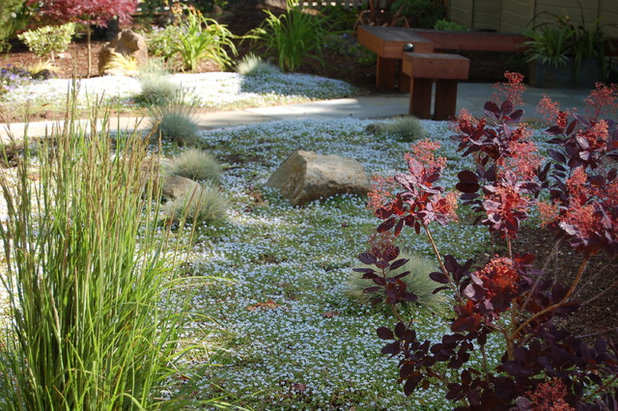
Habitat Design
Working with a flat piece of land? Creating a lake of diminutive blooming ground cover is a great option. Again, remember to add little rock islands or outcroppings for a sealike look.
See more ground cover ideas
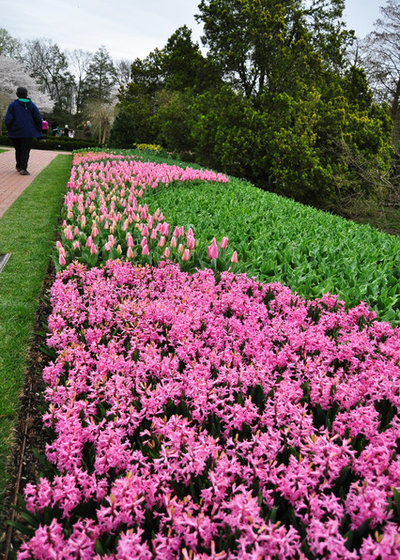
Amy Renea
Want a more formal look? Try combining spring bulbs to create riotous waves of color. The trick to this look is going with only 1 or 2 plants that are guaranteed to bloom at the same time. In this example, pink hyacinth and tulips combine for a mass of pink.
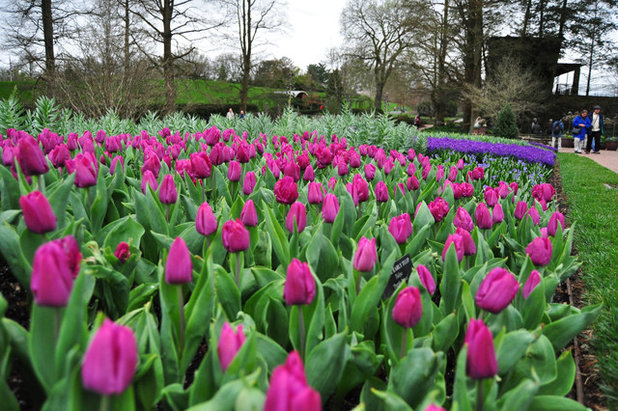
Amy Renea
In contrast to more naturalistic plantings, formal rivers of plants are planted with exact spacings between. Plant in straight lines but alternate spacing between lines for a lush look.
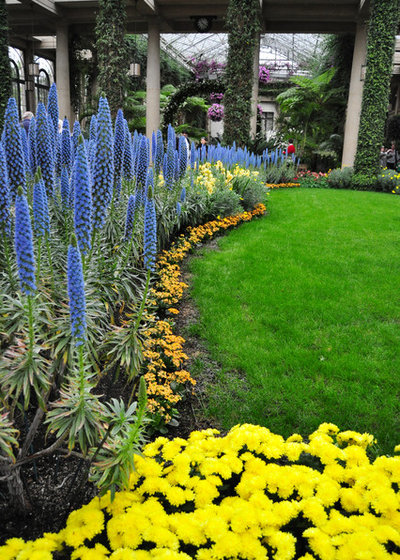
Amy Renea
Here the river of blue 'Pride of Madeira' is actually given a landscaped shoreline. The border of diminutive yellow blooms defines the river's curved line.
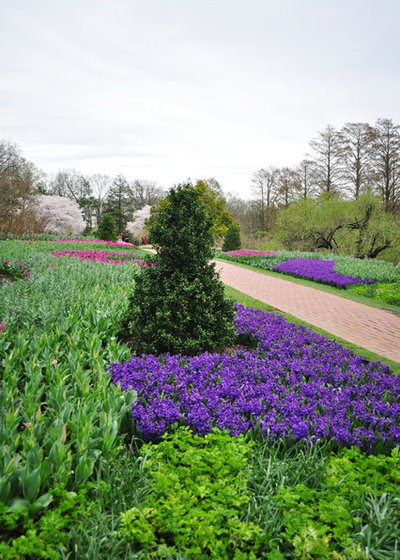
Amy Renea
Whatever look you choose, don't forget the edges of your planting. Rivers of plants need definition and structure so they don't simply look like a planting gone amok. Stick with one or two plants and make sure they are easily propagated.
For a yearly show, pick perennials (which will come back year after year), or go for a grand effect with spring-blooming bulbs. Now go get planting!
More: Get Your Garden Off to a Glowing Start





